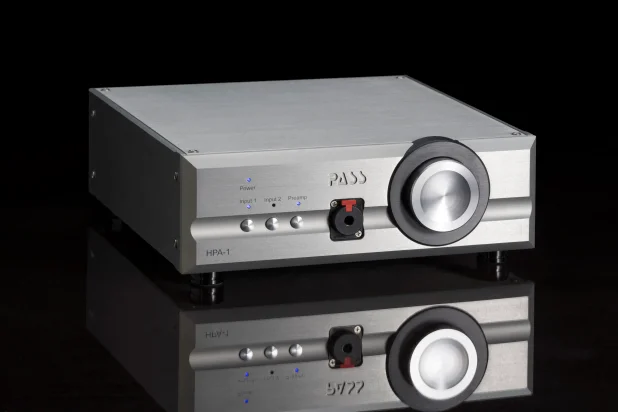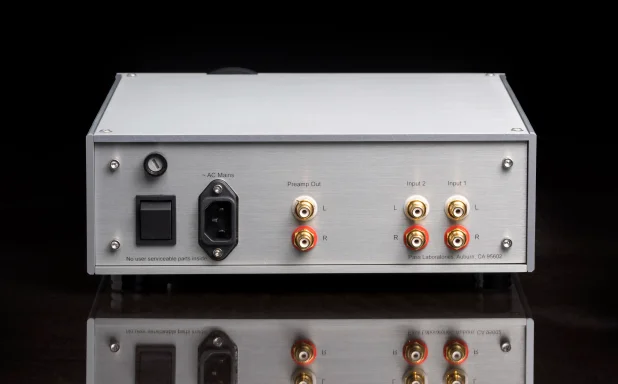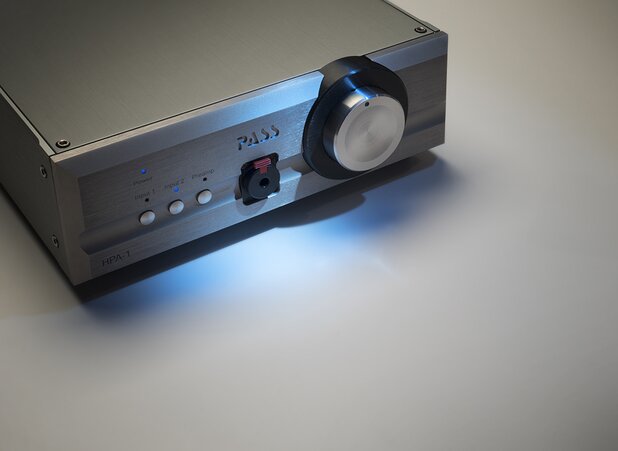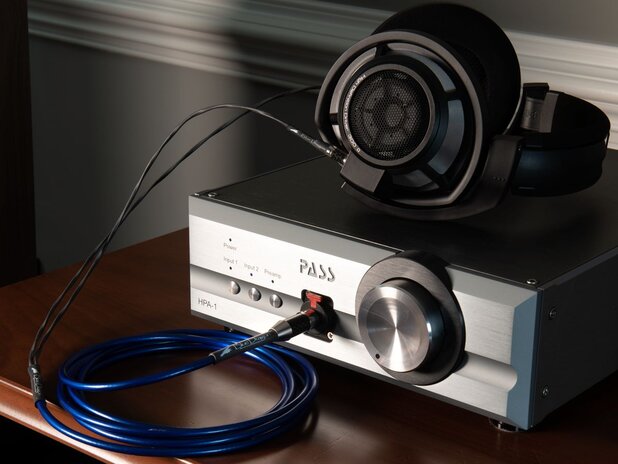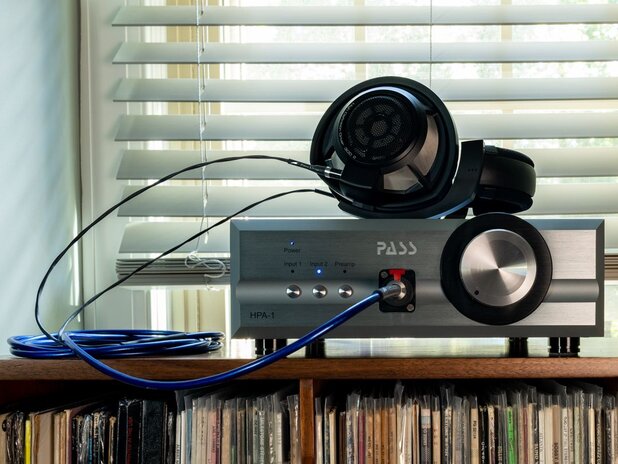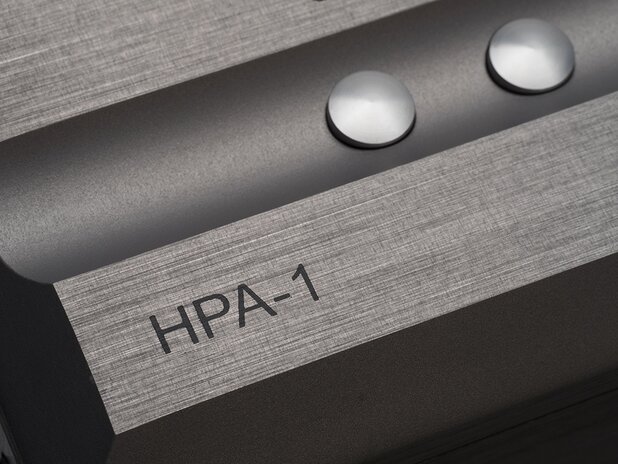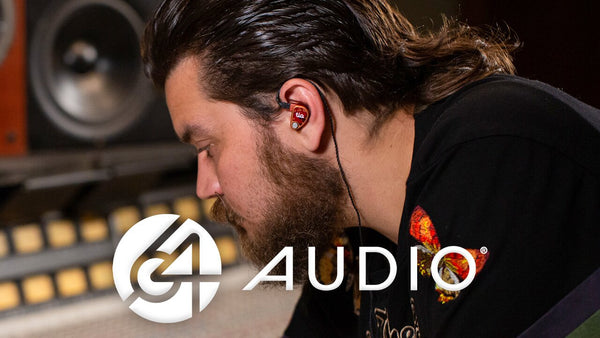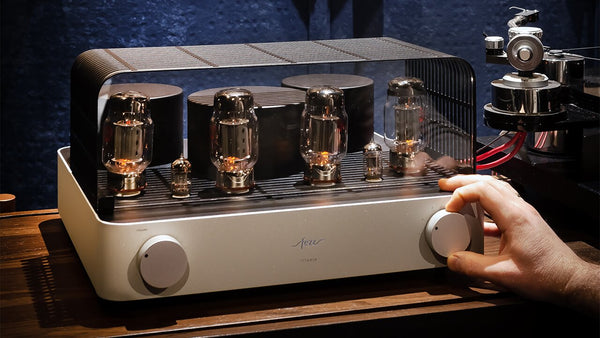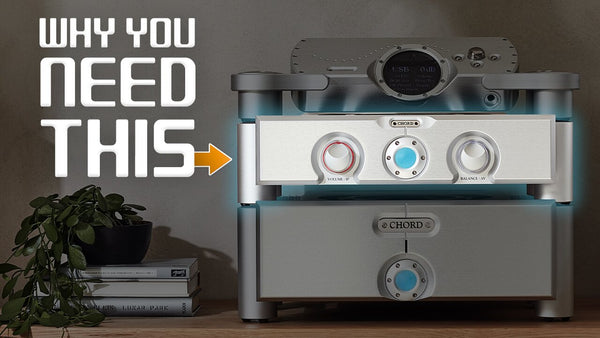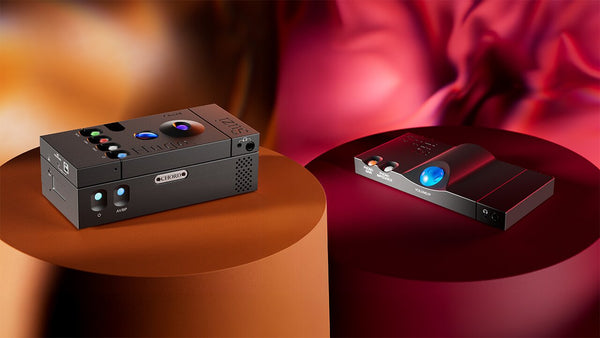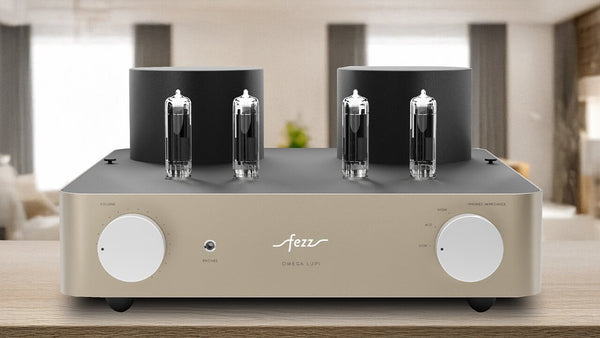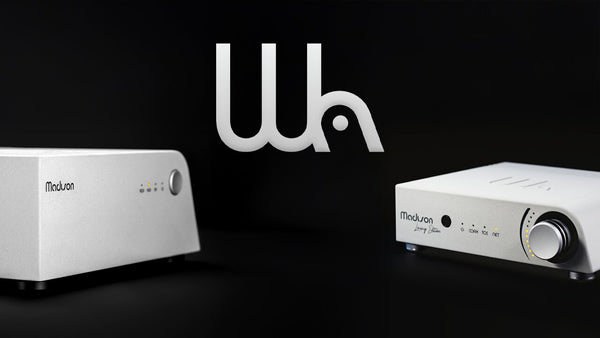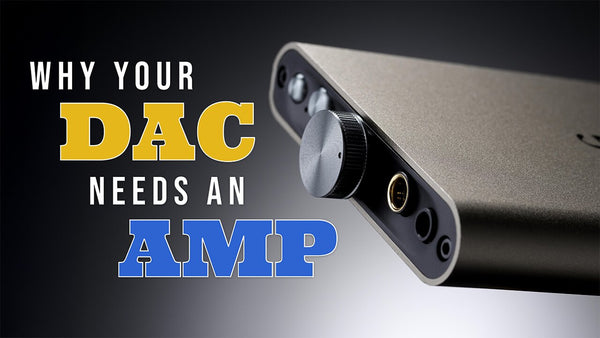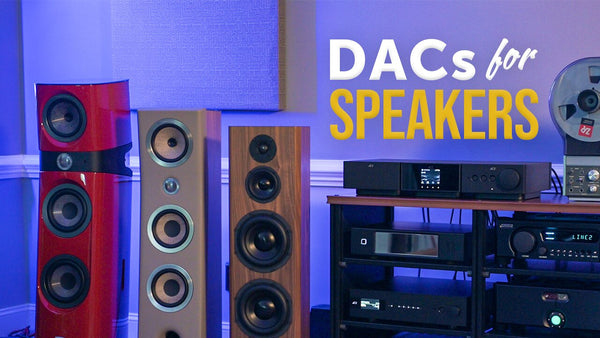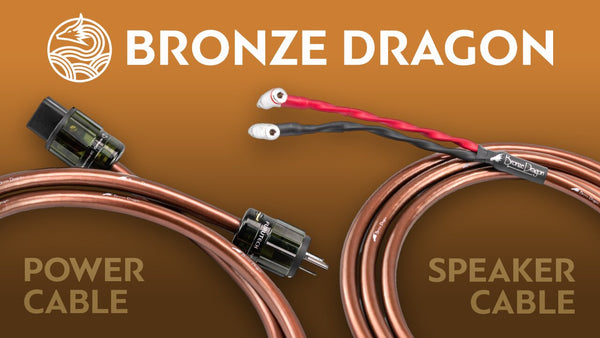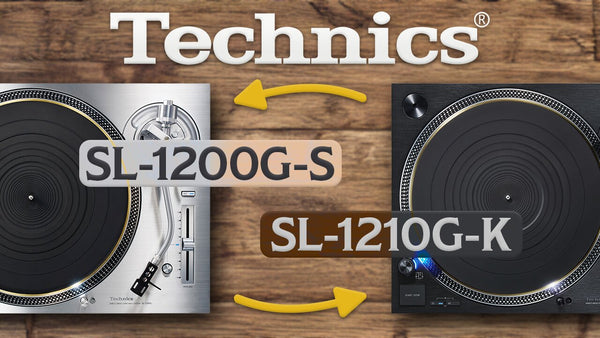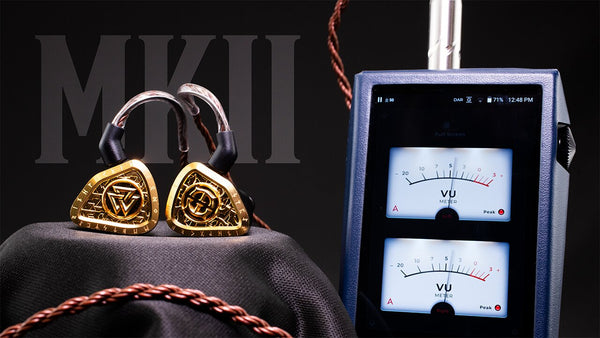Pass Labs HPA-1 Headphone Amplifier Review
Read Time: Approx. 13 min.

Pass Labs' First Headphone Amplifier Has Wowed the Audio World
For many in the audiophile world, the name Nelson Pass needs no introduction. The founder of Pass Laboratories and later First Watt started out in the early 1990s developing prototypes of single-ended Class A amplifier designs. Today, Pass Labs makes some of the finest Class A and Class A/B audio products in the world. But Pass has had some help from other industry talents over the years. Wayne Colburn came on board in the mid-1990s. He began working on an improved version of the company's first preamp and on a new phono stage. He's been at the forefront of many Pass Labs designs over the years while Pass himself spends some of his time on First Watt projects.
In 2013, Jam Somasundram, formerly of Cary Audio, came on board at Pass Labs. The HPA-1 is his first design for Pass Labs, and it's Pass Labs' first headphone amp. Somasundram spent a year working on it, unveiling it at the Consumer Electronics Show (CES) in 2015. It formally launched a year later. At $3,500, it's on the upper price end for headphone amps, but it's actually the least expensive Pass Labs amp.
The Pass Labs HPA-1 is a Class A headphone amp that also functions as a preamplifier. You might ask, "Why don't you call it a preamp that functions as a headphone amp?" Back in the day, a preamplifier would include a headphone jack, but it was first and foremost a preamp. Most often, the headphone section on these preamplifiers was just a small OpAmp-based low-powered circuit that could not handle the wide range of impedance issues of today's headphone specs. With the explosion of headphone popularity, headphone amps are now like more powerful preamps; headphone amp first, with preamp functionality. That being said, Somasundram designed the HPA-1 as a preamp first. It's more like Pass Labs' power amps, he said, and it's designed to drive almost any headphone. Tomato-tomahto, perhaps. This review will focus on the headphone amp functionality of the HPA-1.
The year it was released, the HPA-1 was named Headphone Amplifier of the Year by The Absolute Sound and Best Headphone Amplifier by HomeTheaterHiFi, and was named Amplifier of the Decade by Stereophile Magazine. I have repeatedly read and heard that the HPA-1 is one of the best headphone amps out there, so I was super eager to give it a listen.

PROS
- Big, natural soundstage
- Neutral-warm, musical sound
- Will drive any dynamic or planar magnetic headphone
- Doubles as a preamplifier
CONS
- Not energy efficient; gets very hot
- No balanced connection
- No remote control
Design
The HPA-1 is a solid-looking box, measuring 4.5x11x14 inches and weighing 14 pounds. It's brushed aluminum and it's got a simplicity to it, as if there's absolutely nothing there that doesn't need to be. The front panel features:
- a single, locking Neutrik 1/4" headphone jack;
- a large volume control knob; and
- three buttons to select inputs or to engage the preamp output.
The three buttons select the chosen input and, using high-quality relays, switch between the rear-panel preamp-output jacks and the front-panel headphone jack.
Note that the unit is designed to stay on at all times. When the power is turned on the unit goes into a mute state for 20 seconds, this is to allow the circuitry to stabilize. During this period no functions are available. During the mute period the power LED will flash. When the unit goes out of mute into operate mode, the power LED will stop flashing and stay on.
I have no complaints about the design: sturdy, compact, and attractive. My only comment pertains to the headphone jack: it doesn't seem to "go" with the design. But since I've brought it up, here what Pass Labs says about it:
"The Neutrik locking headphone connector has become the de-facto standard in the broadcast world because of its rugged reliability. But beyond that it has special attributes, that make it ideal for our purposes and your listening pleasure. First, the Neutrik locking connector provides an isolated signal ground connection for greater signal purity. The high contact pressure and positive locking mechanism of this piece work in conjunction to maintain the best possible signal integrity between the headphone amp circuit and the headphones. The silver contacts are rated to reliably carry 10A of current without overheating and are largely self cleaning. If there is a better sounding and more trouble-free 1/4” audio jack, we’ve yet to experience it!"
As far as the tactile experience, it's a win in my book. I love the large volume knob with a convex center. I also like the three push buttons on the front panel. Do you remember button candy ... the little dots you would peel off of strips of paper? They remind me of those. Plus, there's an oddly satisfying three-syllable audible click when you push one.
Pass Labs conceptually designed the HPA-1 as a real Class-A power amplifier, not as an accessory offering only incremental performance gains. The HPA-1 spares nothing in the circuit design and spares no necessary expense in execution. The foundation of the HPA-1's engineering is a custom, low-noise shielded toroidal power transformer feeding a discreet low noise regulated power supply for the audio circuits. As Nelson Pass has been known to say, the importance of the power supply is often overlooked and plays a large part in the overall performance of the amplifier.
The HPA-1's amplifier circuits are low-feedback, wide-bandwidth discreet designs employing J-Fet input stages and Class A-biased direct-coupled MOSFET output stages.
Sound
Testing setup: I tested the HPA-1 using the DAC inside of the Matrix Audio Element X (with the Element X's preamp/headphone amp section turned off). Later, for a comparison, I tested the Element X with the headphone amp function turned on. My impressions here are based off of the AEON 2 open-back headphones from Dan Clark Audio.
It's easy to hear right away that the HPA-1 has an almost tube-like sound, with a warm-ish coloration. I'd classify it as warm side of neutral. The sound is very musical, with a generous soundstage and plenty of detail. Now, they say the midrange is where the magic is, and this is as true as ever with the HPA-1. Vocals and acoustic instruments, in particular, have great presence that is natural and tonally accurate. Bass is tight and nicely defined, with a nice amount of body, while highs are sweet and pretty yet wonderfully smooth.
"Skating Away on the Thin Ice of a New Day" by Jethro Tull is one of my go-to test tracks. Here are a few of the things I look for: clarity in the opening sequence where Ian Anderson is making tea; separation between dominant and secondary instruments, especially when the music gets frenetic; highs that aren't too bright (flute, bells, etc.). What I find with the HPA-1 is that the opening sequence as well as vocals sound very close - so close that I can actually feel the clink of the tea spoon against the cup. Bass sounds nicely defined, as do the various instruments. I can easily track them when the music gets busy. The highs sound very sweet but not unpleasant. I noticed that the guitar blasts sound less harsh than usual -- they can be quite jarring on a more analytical system.
On "Architect" by Trey Anastasio, I enjoy the full and ethereal sound with a nice sense of spaciousness. Instrumentals in the song are meant to mimic construction sounds, and I love how they sound crisp and defined but not to the point of drowning out vocals; in fact, vocals are quite front and center here, with the quality of Anastasio's voice matching the reflective tone of the song.
Feeling nostalgic during my first testing session, I called up a song from my high school days: "The Low Spark of High Heeled Boys" from Traffic.
(To clarify: I listened to it in high school; it was released before I was born!) This song is highly evocative for me, but that's a story for another day. The midrange is the star here, with the piano and Steve Winwood's vocals being quite forward. Sax is smooth and takes a back seat, and the bass has a warmth and fullness to it that lends an appropriate amount of moodiness to this jazzy track.
Next I listened to Yes' "Heart of the Sunrise," a track with a wide dynamic range, from the driving guitar passages to the more mellow vocal and keyboard sections. Everything hits my ears with the same force, such that I don't have to adjust the volume knob or strain to hear anything. Vocals are very strong, adeptly holding their own against a backdrop of synth, drums, guitars, cymbals, etc.
Finally, for some female vocals, I called up some Taylor Swift. Hear me out: There's a song from three albums ago called "Death by a Thousand Cuts." I never cared for it. I had only ever heard it on my mediocre car stereo until one day my husband called it up on our home system. (He and I have both developed an appreciation for latter-day Taylor Swift through our daughter.) Holy moly. It turns out there's a whole other song behind the scenes. Suddenly we were being hit with all of these background auditory treats that we didn't even know existed. It was a true a-ha moment. Well, I had that moment again with the HPA-1. The wide open soundstage had those sound treats swirling around my head for a marvelous 3-D listening experience. And there are those great vocals again, with Swift's voice being delivered with lots of texture and breathiness.
Live tracks from The Grateful Dead and Edward Sharpe and the Magnetic Zeros put me right in the midst of the crowd for a truly enveloping and organic sound. If I close my eyes, I forget that I'm tethered to a desk. For a listener who loves to "get lost in the music," the HPA-1 delivers.

Skating Away on the Thin Ice of a New Day
By Jethro Tull
(War Child)

Architect
By Trey Anastasio
(Traveler)

Low Spark of High Heeled Boys
By Traffic
(The Low Spark of High Heeled Boys)

Roundabout
By Yes
(Fragile)
Comparison to the Matrix Audio Element X
The Matrix Audio Element X is a multi-purpose component: headphone amp, DAC, preamp, music steamer. It's what I use for almost all of my listening. I review a lot of IEMs, and the Element X is good with high-sensitivity IEMs, which require a very low output impedance and a quiet power supply. In this review, I used the DAC in the Element X with the HPA-1. So it makes sense for me to compare the headphone amp in the Element X to the HPA-1.
While the HPA-1 has a warm side of neutral sound, the Element X is more neutral, period. Soundstage on the HPA-1 feels larger, as opposed to a more intimate presentation on the Element X. To my ears, the midrange is more prominent on the HPA-1. Both amps do a fine job with detail retrieval and instrument separation, although I do think the Element X has a slight edge here, with a sound that skirts the edges of analytical but doesn't actually get there. That being said, the HPA-1 is the winner when it comes to warmth and musicality. Both are very fine headphone amps. The Element X has more functionality and a marginally lower price tag ($3,500 vs. $3,419).
Dragon Cables
[Black Dragon Interconnect Cable, Black Dragon Power Cable]
There are a lot of reasons why you need to make sure your audio cables are not afterthoughts.
Our HiFi Audio Dragon Cables bring out more of what you love in your music and audio gear. If you love your headphones but wish they had a bit more top-end sparkle - a Silver Dragon Headphone Cable would be a great option. If your USB cables keep dying - as many stock cables do - then check out our quality USB Audio Cables. We say time and time again that materials matter, and our audio cables and custom geometries actually help to bring out those desired properties in your gear and music. We make tons of custom options for our customers so that you can get the right HiFi Audio cable for your exact needs. If you have any questions feel free to Contact Us and we'll be more than happy to help.
Verdict
I was super impressed with the HPA-1. It might sound cliche, but there are certain products you listen to that make you want to start digging through your music so you can hear just how good everything will sound. The HPA-1 is one of those products. I enjoyed it with every headphone and every piece of music I threw at it, though I will say that classical, jazz, blues, and live music were particular highlights, thanks to a wide soundstage and touch of warmth. It's not a "bells and whistles" device that can do six different things, but it can do one thing really, really well -- and that is drive headphones. (Correction: Two things; don't forget it's also a preamplifier.) Add the DAC (digital-to-analog converter) of your choosing and you're in for a luscious-sounding treat.
Featured Products
Related Videos
Custom Dragon Audio Cables: How It's Made
Amps vs. Preamps: What's the Difference?
Our Top 3 Tube Headphone Amps & Why We Love Them
What's in the Box
Specifications
Output Power into 20 ohms: 3500mW
Output Power into 300 ohms: 200 mW
Frequency Response 10hz-100k: -1dB
Gain: 8 dB
THD + Noise: < 0.005 at 1V out
Input Impedance: 50K Ohm
Output Impedance: < 2 ohms
Power Consumption: 6 Watts
Dimensions: 4.5" H x 11" W x 13" D
Weight: 14lbs




